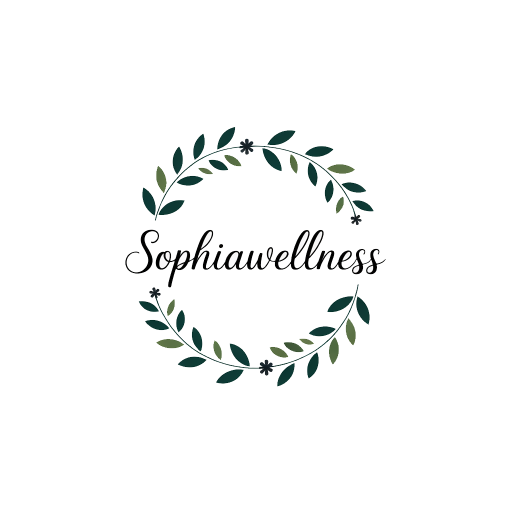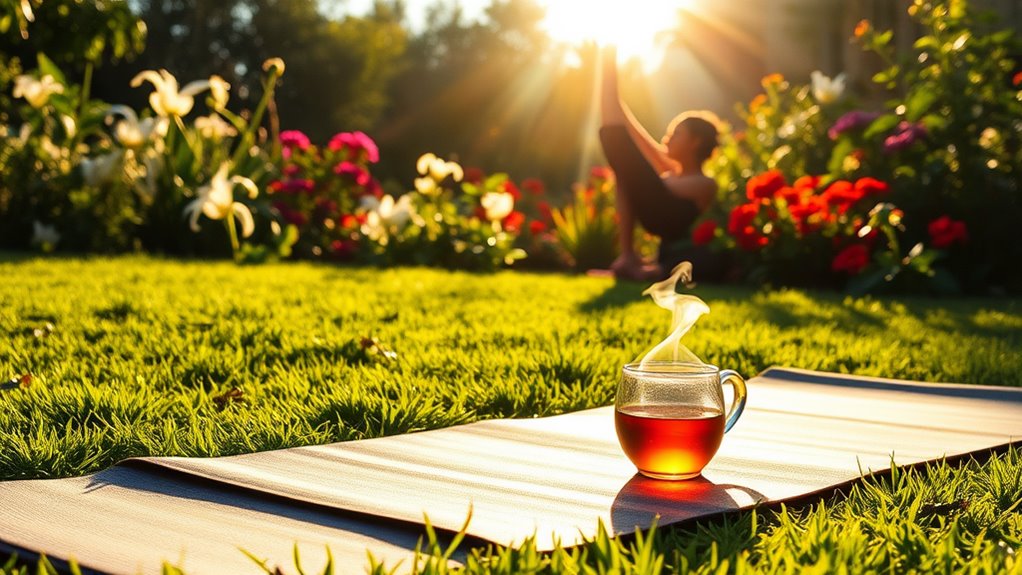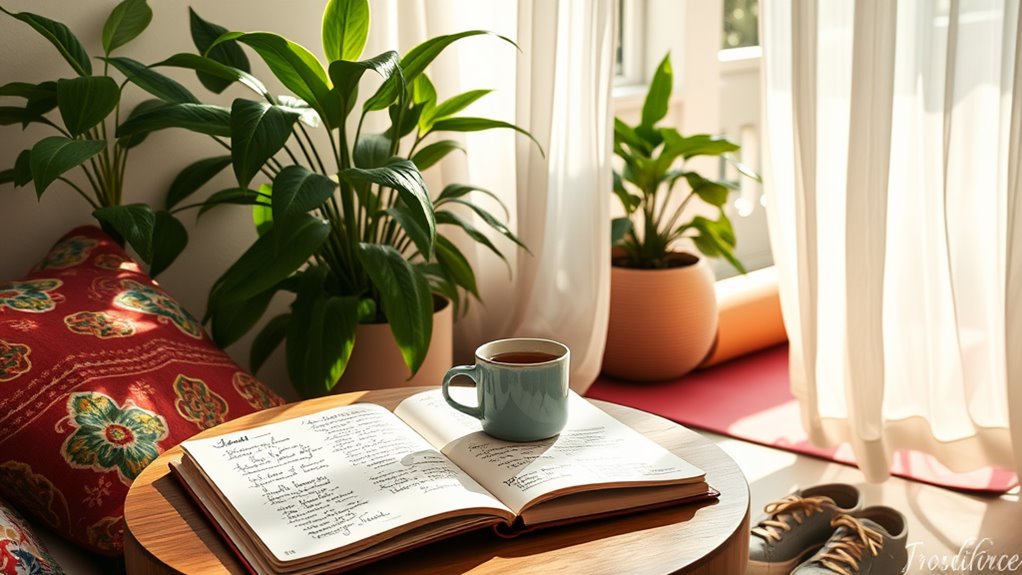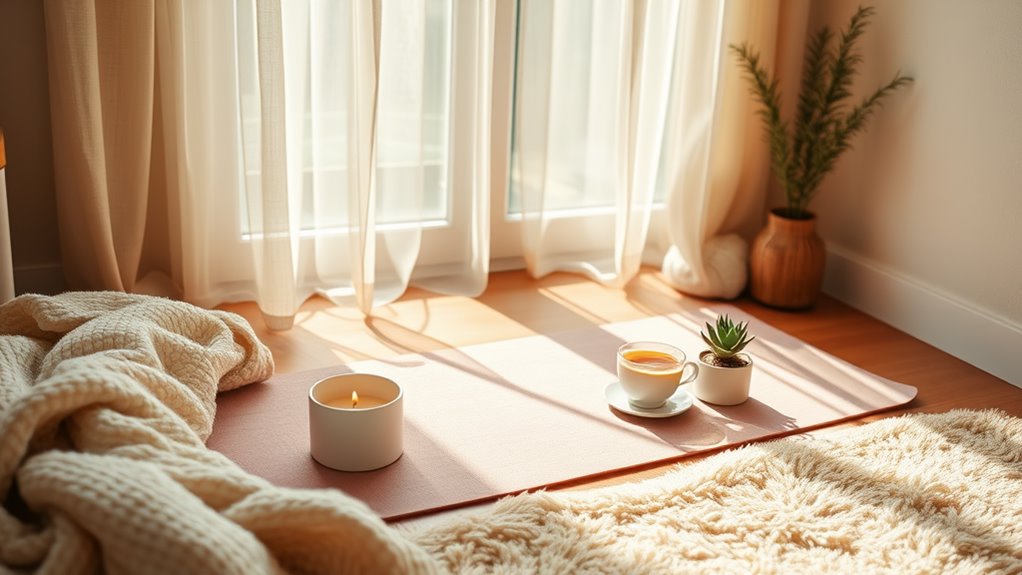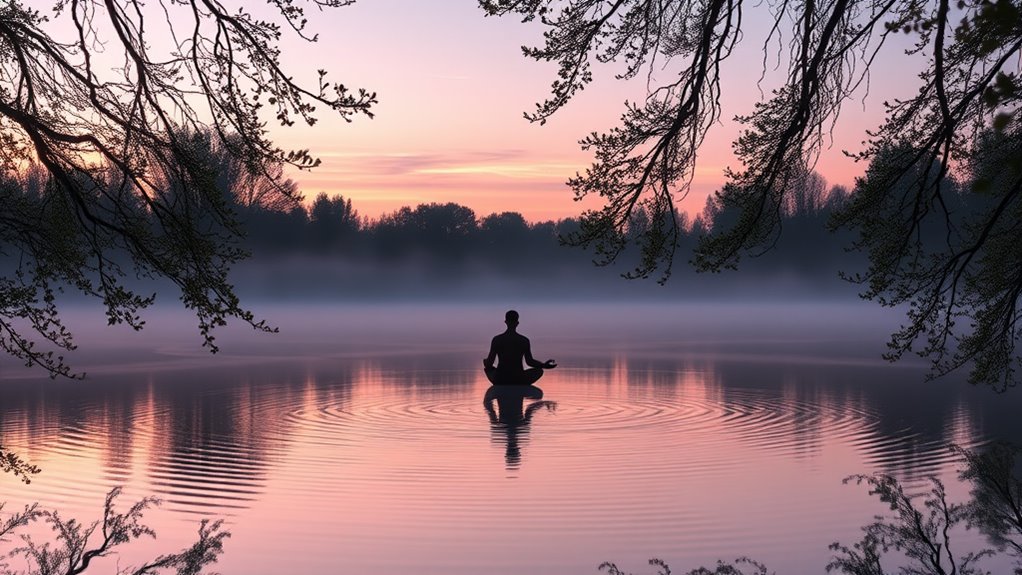How to Make Your Body Feel Amazing With Simple Relaxation
To make your body feel amazing with simple relaxation, focus on deep breathing, stretching, and gentle yoga. Start by inhaling deeply through your nose, holding for a moment, then exhaling slowly. Incorporate daily stretches to ease muscle tension and promote flexibility. Create a calming environment at home with soft lighting and soothing scents. Staying hydrated also plays a key role in relaxation. Discover more effective techniques to enhance your well-being and cultivate inner peace.
Key Takeaways
- Practice deep breathing techniques to calm the mind and enhance oxygen intake, promoting relaxation and mental clarity.
- Incorporate daily stretching exercises to improve flexibility, reduce muscle tightness, and enhance overall comfort in the body.
- Create a relaxing environment at home with calming colors, soft lighting, and soothing scents to promote a tranquil atmosphere.
- Engage in gentle yoga poses to relieve stress and promote relaxation while focusing on breath and mindfulness.
- Stay properly hydrated by drinking water and consuming hydrating foods, as proper hydration contributes to a relaxed state of mind and body.
The Importance of Relaxation for Overall Well-Being
Relaxation is crucial for your overall well-being, acting as a balm for both the mind and body. When you prioritize body and mind relaxation, you release a myriad of benefits that enhance your life.
It’s not just about unwinding; it’s about fostering resilience against stress. By incorporating regular relaxation techniques into your routine, you improve your focus, boost creativity, and elevate your mood.
This practice allows your body to recover from daily strains and promotes a sense of inner peace. You’ll find that when you’re relaxed, your productivity soars, and you approach challenges with clarity.
Incorporating breathing techniques can further amplify the benefits of relaxation, helping to reduce anxiety and enhance your overall mental well-being. Embrace relaxation as an essential component of your lifestyle, and watch as it transforms your mental and physical health for the better.
Deep Breathing Techniques to Calm the Mind
Deep breathing can transform your mental state and bring you a sense of calm. By learning specific techniques, you can harness its benefits and easily incorporate it into your daily routine. In fact, combining deep breathing with mindfulness practices can enhance your relaxation and overall well-being. Let’s explore how you can use deep breathing to enhance your relaxation and overall well-being.
Benefits of Deep Breathing
When you take a moment to focus on your breath, you open up a powerful tool for calming your mind and reducing stress.
Deep breathing enhances your oxygen intake, promoting better circulation and increasing energy levels. As you engage in this practice, you stimulate your body’s relaxation response, which lowers heart rate and blood pressure, creating a tranquil state.
This simple technique can also improve mental clarity and concentration, allowing you to tackle challenges with greater ease. Regular deep breathing can foster emotional resilience, helping you manage anxiety and frustration more effectively. Additionally, deep breathing techniques are known to activate the parasympathetic nervous system, which further aids in stress relief and promotes a sense of well-being.
Step-by-Step Techniques
Mastering deep breathing techniques can greatly enhance your ability to calm your mind.
Start by finding a comfortable position, whether sitting or lying down. Close your eyes and take a slow, deep breath in through your nose, allowing your abdomen to rise. Hold that breath for a count of four, feeling the pause.
Now, exhale slowly through your mouth, visualizing tension leaving your body. Repeat this process for several cycles, focusing on the rhythm of your breath. If your mind wanders, gently bring your attention back to your breathing.
Aim for at least five minutes of practice. With consistency, you’ll cultivate a serene mental state, empowering you to navigate daily challenges with clarity and composure. Incorporating breathing techniques into your routine can further enhance your relaxation experience.
Incorporating Breathing Into Routine
Incorporating breathing techniques into your daily routine can transform how you handle stress and enhance your overall well-being.
Start with deep belly breathing: inhale slowly through your nose, letting your abdomen expand, then exhale gently through your mouth. Aim for a count of four on the inhale, hold for four, and exhale for six. Practice this for five minutes each morning to set a calming tone for your day.
You can also utilize box breathing; inhale for four counts, hold for four, exhale for four, and pause for another four. This method sharpens focus and reduces anxiety. Engaging in effective breathing exercises can further support your journey towards mental clarity and relaxation.
Integrating these techniques consistently will empower you to master your stress response, leading to a more balanced and centered life.
Stretching Exercises to Release Tension
Stretching exercises can work wonders for releasing built-up tension in your body.
You’ll discover effective techniques that not only enhance flexibility but also promote relaxation.
Incorporating a daily stretching routine can greatly improve your overall well-being and help you feel amazing.
Benefits of Stretching
Releasing tension through stretching can transform your day, leaving you feeling revitalized and focused.
Regular stretching offers numerous benefits that enhance both your physical and mental well-being. By incorporating stretching into your routine, you can:
-
Improve Flexibility: Gain greater range of motion, allowing for more fluid movement in daily activities.
-
Reduce Stress: Alleviate muscle tightness and tension, promoting a sense of calm and relaxation.
-
Enhance Circulation: Boost blood flow, delivering essential nutrients and oxygen to your muscles and tissues.
Embrace stretching as a crucial part of your self-care regimen.
You’ll not only feel more at ease in your body but also sharpen your mind, preparing you to tackle challenges with renewed energy and clarity.
Effective Stretching Techniques
After recognizing the benefits of stretching, it’s time to explore effective techniques that can help you release tension and enhance your overall well-being. Here are some powerful stretching exercises you can incorporate into your routine.
| Stretch Type | Focus Area |
|---|---|
| Neck Stretch | Neck and shoulders |
| Seated Forward Bend | Lower back and hamstrings |
| Cat-Cow Stretch | Spine and core |
| Standing Quad Stretch | Thighs and hips |
Daily Stretching Routine
Incorporating a daily stretching routine can greatly reduce tension and improve your overall well-being. By committing just a few minutes each day, you can enhance your flexibility, boost circulation, and alleviate stress.
Here are three effective stretches to include:
-
Neck Stretch: Gently tilt your head to one side, feeling a stretch along the opposite side. Hold for 15-30 seconds on each side.
-
Cat-Cow Pose: Move between arching and rounding your back while on all fours to release spinal tension.
-
Hamstring Stretch: Sit with one leg extended, reach toward your toes, and hold for 15-30 seconds to ease tightness.
Practice these consistently, and you’ll notice a significant improvement in how your body feels each day.
The Benefits of Mindfulness Meditation
Although you might feel overwhelmed by daily stressors, mindfulness meditation can transform your mental landscape. This practice sharpens your focus, enabling you to engage fully in each moment.
You’ll notice a decrease in anxiety and stress as you learn to observe your thoughts without judgment. By cultivating this awareness, you enhance emotional resilience, making it easier to navigate challenges.
Research shows that regular mindfulness meditation can even improve cognitive function, leading to better decision-making and creativity.
As you deepen your practice, you’ll develop a profound connection to your inner self, fostering a sense of peace that radiates into your daily life.
Embrace mindfulness meditation, and watch how it enriches your experience and elevates your well-being.
Creating a Relaxing Environment at Home
To create a relaxing environment at home, start by choosing calming colors that soothe your senses.
Incorporate soft lighting to set a warm and inviting atmosphere, and consider adding soothing sounds to enhance your space.
These elements can greatly transform your surroundings into a peaceful retreat.
Choose Calming Colors
Choosing calming colors can greatly enhance your home’s relaxation vibe, making it easier for you to unwind after a long day.
By selecting hues that promote tranquility and comfort, you create an environment that nurtures serenity.
Consider incorporating the following colors into your space:
-
Soft Blues: They mimic the sky and water, instilling a sense of peace.
-
Gentle Greens: These shades evoke nature, promoting harmony and rejuvenation.
-
Warm Neutrals: Earthy tones such as beige and taupe provide a cozy backdrop, grounding your surroundings.
When you paint or decorate with these colors, you’ll notice how they influence your mood and energy levels, transforming your home into a sanctuary of calm and relaxation.
Incorporate Soft Lighting
Creating a relaxing environment at home becomes effortless when you incorporate soft lighting. Instead of harsh overhead lights, opt for table lamps, floor lamps, or dimmable fixtures that emit a warm glow. This gentle illumination creates a cozy atmosphere, inviting tranquility into your space.
Use soft white or amber bulbs to enhance comfort, as they mimic natural light and reduce eye strain. You might also consider adding candles for their flickering warmth and calming scent.
Position your lighting strategically to highlight cozy corners or create zones for relaxation. By thoughtfully integrating soft lighting, you foster a serene ambiance that encourages unwinding and rejuvenation, turning your home into a sanctuary where you can truly feel amazing.
Add Soothing Sounds
How can you transform your space into a haven of relaxation? One powerful way is by adding soothing sounds that envelop you in tranquility.
Whether it’s the gentle rustle of leaves or soft instrumental music, these sounds can greatly enhance your environment. Here are a few ideas to get you started:
-
Nature Sounds: Incorporate recordings of rain, ocean waves, or birds chirping.
-
Ambient Music: Curate playlists featuring soft piano, strings, or acoustic guitar.
-
Sound Machines: Invest in a sound machine that offers a variety of calming soundscapes.
The Power of Aromatherapy for Relaxation
When you inhale the soothing scents of essential oils, you instantly tap into the remarkable power of aromatherapy for relaxation. Each aroma has distinct properties that can elevate your mood, reduce stress, and promote a sense of calm.
For instance, lavender eases anxiety, while citrus scents invigorate your spirit. To harness these benefits, create a personalized blend that speaks to you. Use a diffuser or simply add a few drops to your bath.
As you breathe deeply, focus on the sensations that arise, allowing the fragrances to wash over you. By integrating aromatherapy into your routine, you cultivate a sanctuary of peace, transforming your space into a haven for relaxation and rejuvenation.
Embrace this practice, and feel the profound effects unfold.
Gentle Yoga Poses for Stress Relief
As you explore gentle yoga poses, you’ll discover a powerful tool for relieving stress and promoting relaxation.
These poses help you connect with your body and mind, enhancing your overall well-being. Here are three effective poses to incorporate into your practice:
-
Child’s Pose: This restorative pose promotes deep breathing and gently stretches your back, allowing you to release tension.
-
Cat-Cow Stretch: Flowing between these two poses increases flexibility in your spine and encourages mindful movement.
-
Legs-Up-The-Wall Pose: Elevating your legs reduces fatigue and calms your nervous system, making it an excellent choice for unwinding after a long day.
Incorporating Relaxation Into Your Daily Routine
Gentle yoga poses can be a fantastic starting point for integrating relaxation into your daily life. Each morning, dedicate just ten minutes to practice these poses. As you move through the stretches, focus on your breath, allowing each inhalation and exhalation to ground you.
Throughout the day, create small moments for mindfulness. Whether it’s during a coffee break or while waiting in line, take a few deep breaths and consciously release tension.
Incorporate short relaxation sessions into your evening routine. This could be a calming meditation or simply winding down with soothing music.
The Role of Hydration in Body Relaxation
Staying properly hydrated is essential for your body to feel relaxed and function at its best. When you’re well-hydrated, your body can effectively flush out toxins, maintain ideal temperature, and support overall bodily functions.
This process greatly contributes to a relaxed state of mind and body.
To enhance your hydration and relaxation, consider these tips:
-
Drink water consistently: Aim for at least eight glasses a day, adjusting for activity level and climate.
-
Incorporate hydrating foods: Include fruits and vegetables like cucumber, watermelon, and oranges in your diet.
-
Limit dehydrating substances: Reduce caffeine and alcohol intake, as they can lead to fluid loss.
Listening to Music for a Tranquil Experience
Hydration plays an essential role in your overall sense of relaxation, but don’t underestimate the power of music in creating a tranquil atmosphere.
When you immerse yourself in soothing melodies, you engage your mind and body in a harmonious experience. Choose tracks that resonate with your emotions, whether calming instrumentals or gentle nature sounds.
As you listen, focus on your breath and allow the music to wash over you, releasing tension and fostering serenity.
Create a dedicated space for this practice, free from distractions. Incorporate music into your relaxation routine, and you’ll find it enhances your ability to unwind and recharge.
Frequently Asked Questions
How Long Should I Practice Relaxation Techniques Daily?
Studies show that just 10-15 minutes of daily relaxation can greatly reduce stress levels and improve focus. You should aim for this duration, gradually increasing it as you become more comfortable with the techniques.
Can Relaxation Techniques Improve Sleep Quality?
Yes, relaxation techniques can greatly enhance your sleep quality. By calming your mind and reducing stress, you’ll fall asleep faster and enjoy deeper rest. Consistent practice helps create a peaceful bedtime routine that promotes restorative sleep.
Are There Relaxation Methods for Busy Schedules?
Feeling overwhelmed? You can still find time to relax. Try deep breathing, quick meditation, or stretching during breaks. These methods fit seamlessly into your busy schedule, helping you recharge and boost productivity throughout the day.
What Are the Signs That I Need to Relax?
You’ll notice signs like tension headaches, irritability, fatigue, or difficulty concentrating when you need to relax. Listening to your body’s cues helps you prioritize self-care, ensuring you maintain peak performance and emotional well-being.
Can Relaxation Help With Chronic Pain Management?
Yes, relaxation can greatly aid in chronic pain management. You’ll find that techniques like deep breathing and mindfulness reduce tension, helping your body release pain signals and improve overall comfort when practiced consistently.
